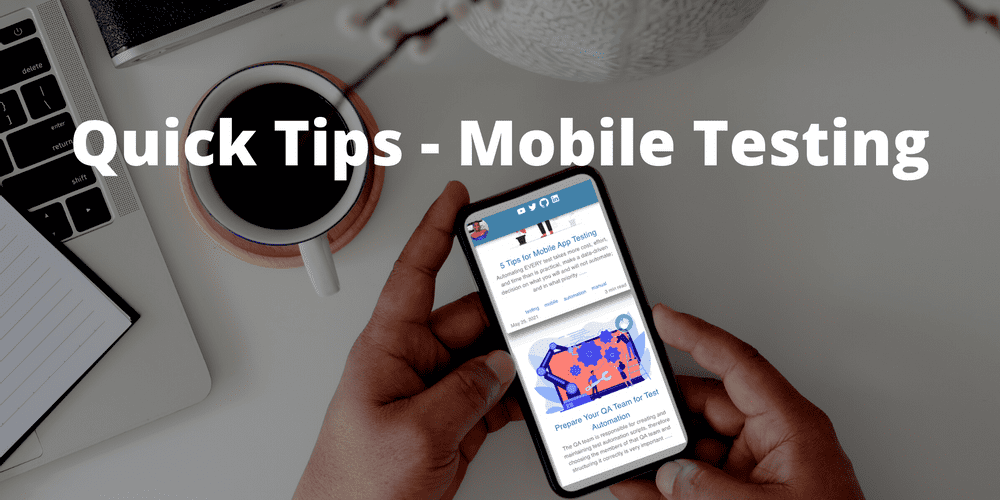5 Tips for Mobile App Testing
May 25, 2021
Mobile app testing can be seen as very time-consuming and difficult given the huge number of mobile devices as well as different screen sizes and orientations that must be tested on.
Here is a summary of 5 quick wins that you can use on your mobile app testing journey to have wider test coverage and more effective mobile testing. Check out the full article here.
1. Understand your audience
Using data gathered that reflects the types of users, what devices they use the app on, orientation, most used functionality among other analytical data can help the test team evaluate the highest priority and shift focus to those areas.
2. Automate repeatable tests
Mobile test automation when done right can reduce the time spent on doing regression and testing multiple screen sizes and devices.
Another important thing to consider is that some test automation frameworks allow you to test on both iOS and Android while others only allow one. If you have a cross-platform app consider using a framework that will help to reduce the amount of code that you will have to write and allows your test automation code to be cross-platform as well.A great example for such a platform is TestProject that’s not only cross-platform, but even enables automating iOS on Windows machines, without any Xcode or macOS required.
3. Visually validate your mobile app
Visual validation allows you to check for any deviation from the expected layout and UI design of your mobile application. Different tools are available in today’s market using AI technology to provide checks for UX, localization, usability, responsive design, and cross-device testing on mobile and web applications.
4. Use simulators/emulators
Simulators and emulators can be used to save on the cost of using real devices. Use cloud solutions/local emulators to get a wide variety of devices. These devices can be combined with your automated tests to increase your mobile test coverage
5. Use real devices to test interrupts
Interrupts such as notifications, phone calls, messages, dropped internet, phone auto-locking or an alarm going off happens every day to real users and it is critical that you will test these on your mobile app and ensure that it works or based on the scenario fails gracefully. There are a lot of interrupt scenarios that can be tested and if your mobile app does not handle these well then it can frustrate users and cause them to use other alternatives.
_ _
This list is not exhaustive by any means but is a great starting point if you’re considering how to effectively test mobile apps.
Check out the full article here.
